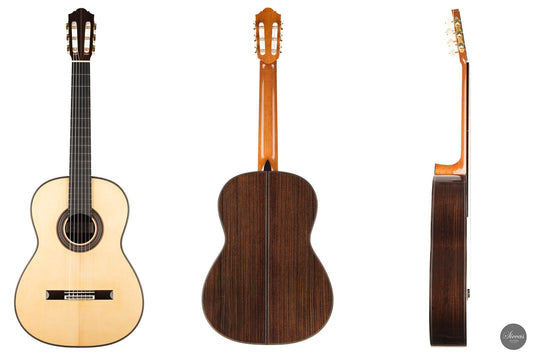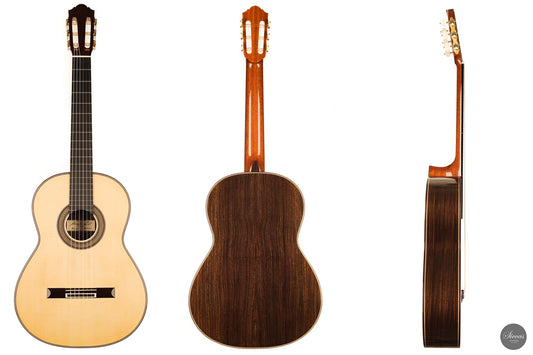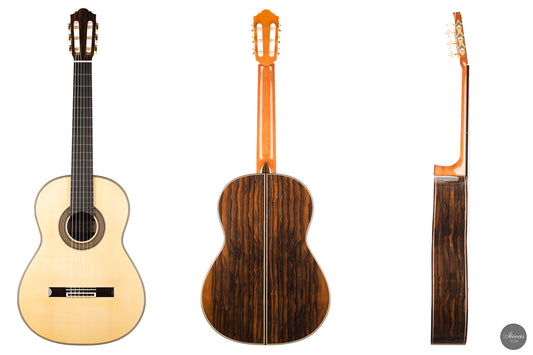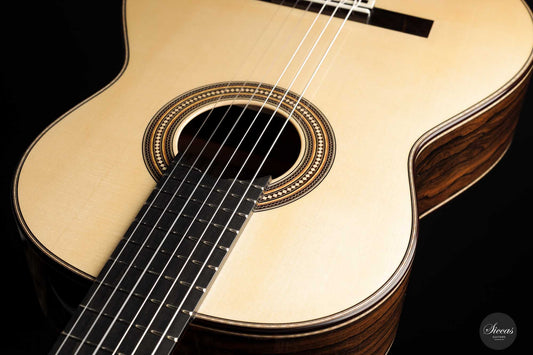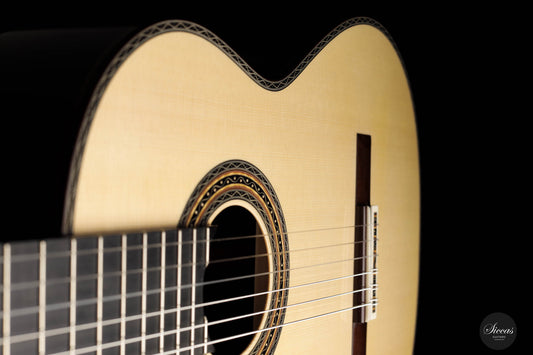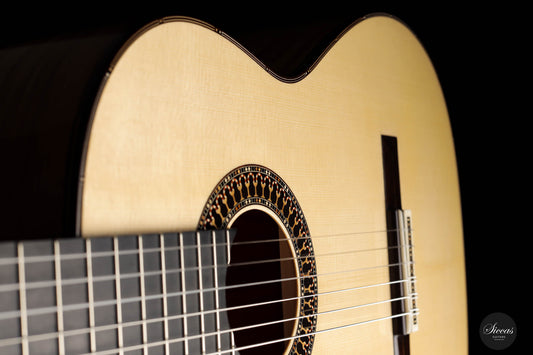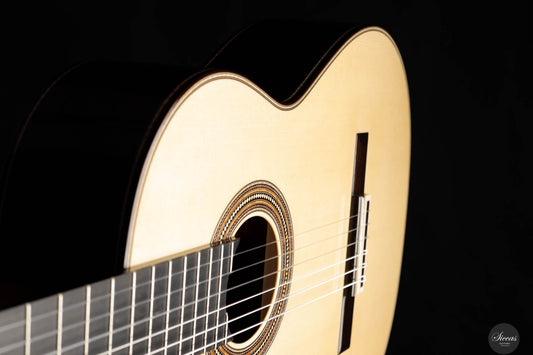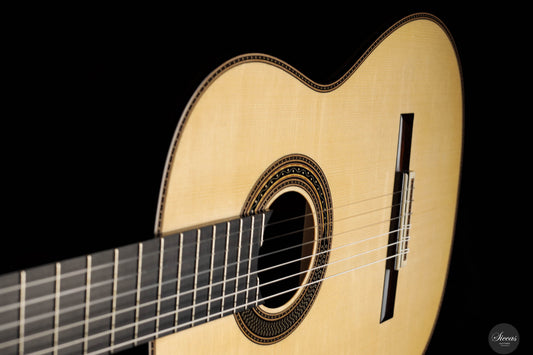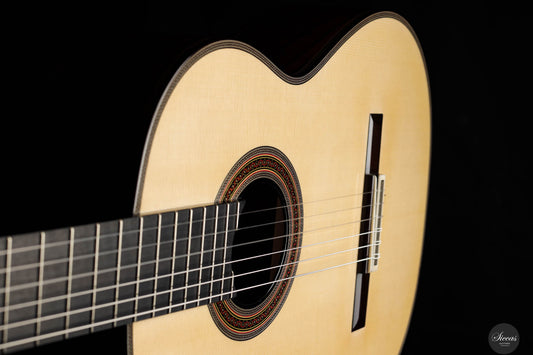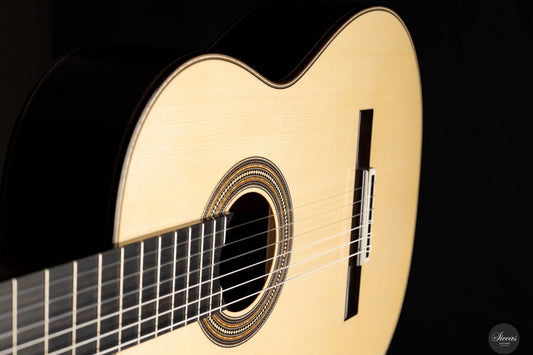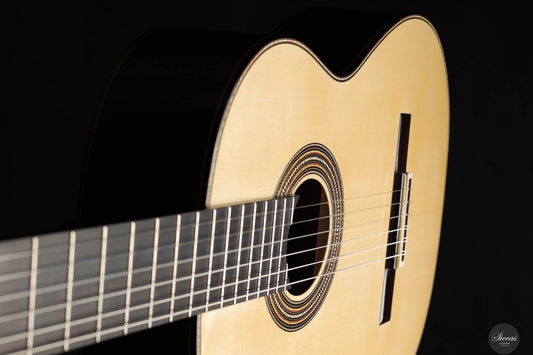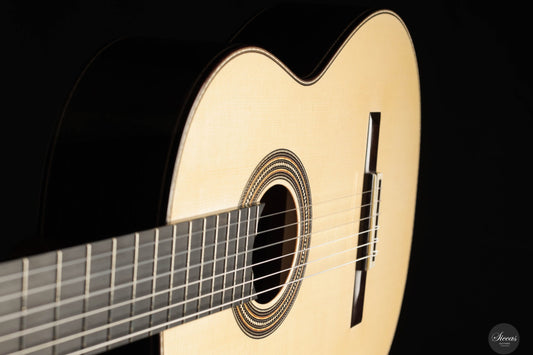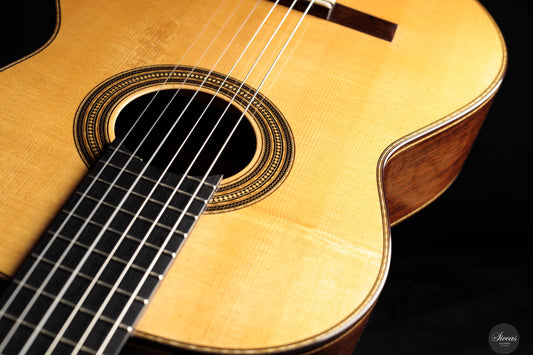Angelo Vailati
-
Luthier: Angelo Vailati
-
Luthier: Angelo Vailati
-
Luthier: Angelo Vailati
-
Luthier: Angelo Vailati
-
Luthier: Angelo Vailati
-
Luthier: Angelo Vailati
-
Luthier: Angelo Vailati
-
Luthier: Angelo VailatiLuthier: Daniele Marrabello
-
Luthier: Angelo Vailati
-
Luthier: Angelo Vailati
-
Luthier: Angelo Vailati
-
Luthier: Angelo Vailati
-
Luthier: Angelo Vailati
-

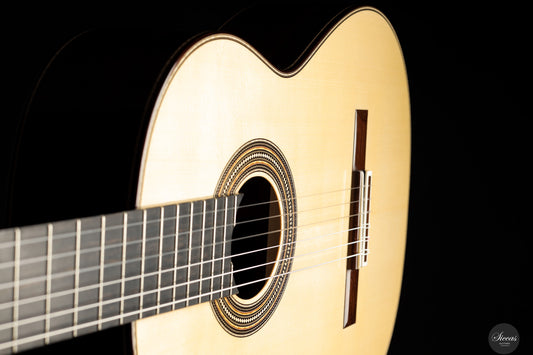 Reserved
ReservedAngelo Vailati - 2025 - No. 258
Price: 9.490 €Sale price 9.490 € Price:Unit price per Tax free (0% DE)0 €Save: -9.490 €ReservedLuthier: Angelo VailatiConstruction Type: Traditional
You may also be interested Angelo Vailati
About the Luthier
Angelo Vailati was born on November 28, 1977, in Treviglio (Bergamo), located in northern Italy.
First Guitar and Early Curiosity
At the age of 16, he received his first guitar. Instead of practicing scales and chords, he became fascinated with building one himself. That summer, without any knowledge of luthiery or tools, he crafted his first guitar using 2 mm beech plywood recycled from cinema chairs owned by his father. The instrument turned out peculiar: screws served as tuning pegs, there was no fingerboard, and aluminum pieces acted as frets. When steel strings were added, the body warped, and the failed instrument was discarded.
A Gift and a Pause
Later, his father brought him a gift from Cremona: a spruce soundboard and a maple set for a small guitar. Perhaps he already foresaw Angelo’s future path. After the failure of his first guitar, Angelo paused his hobby for several years, leaving the materials untouched on a shelf.
Professional Education in Luthiery
In 2001, Angelo rekindled his passion and enrolled at the Civica Scuola di Liuteria di Milano, specializing in plucked instruments. The four-year professional program combined practical training with theoretical courses in chemistry, acoustics, music, restoration, and instrument history. In his first year, he built a small guitar inspired by an 1890 Torres model (SE141). In his second year, he began building classical guitars at home, starting with a copy of a Hermanos Conde cypress guitar, which he later sold. Each completed instrument strengthened his desire to begin a new one.
Mentorship and Artistic Influence
Towards the end of his studies, Angelo was mentored by luthier Enrico Bottelli, who taught him precision, refined ornamentation, harmonious wood combinations, and elegant shaping. Through listening to recorded guitar music with Bottelli, he discovered the expressive diversity of the classical guitar. During this period, he developed a deep admiration for traditional Spanish guitars by Antonio de Torres, Enrique Garcia, Manuel Ramirez, Santos Hernandez, and Domingo Esteso.
Further Study and International Experience
In 2006, Angelo attended the José Romanillos Guitar Making Course in Sigüenza, Spain. In 2008, he traveled to Granada to work with Daniele Chiesa during the summer, learning much about the traditional methods of the Granada school and the importance of professional reliability and consistent construction techniques.
Sound as a Creative Goal
With every new guitar he builds, Angelo aims to discover an expressive and evocative tone capable of conveying musical emotion.
Philosophy of the Ideal Guitar
He believes that a guitar is exceptional when only a few notes already feel musical and inspire further ideas. A fine guitar should have deep, distant resonance, mysterious echoes, and warm, lively tones that inspire the player.
The Craft and Its Complexity
Mastering the craft requires understanding the many variables of guitar building—woods, thicknesses, gluing techniques, tensions—and their relationship to the final sound. It also involves continuous improvement as a craftsman and developing empirical knowledge supported by scientific understanding.
The Ongoing Pursuit of Perfection
Although it may seem simple, Angelo believes that not even all the guitars built by any maker in a lifetime would be enough to fully achieve the ideal instrument envisioned.



